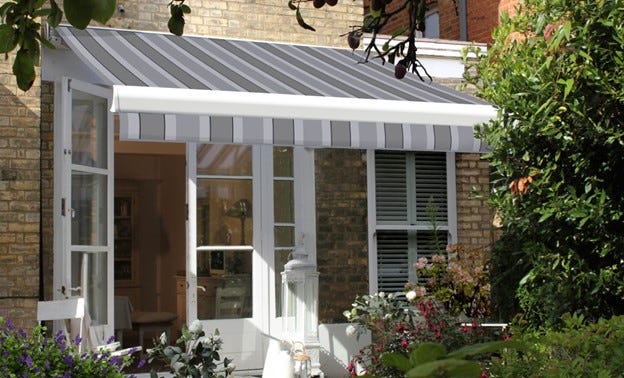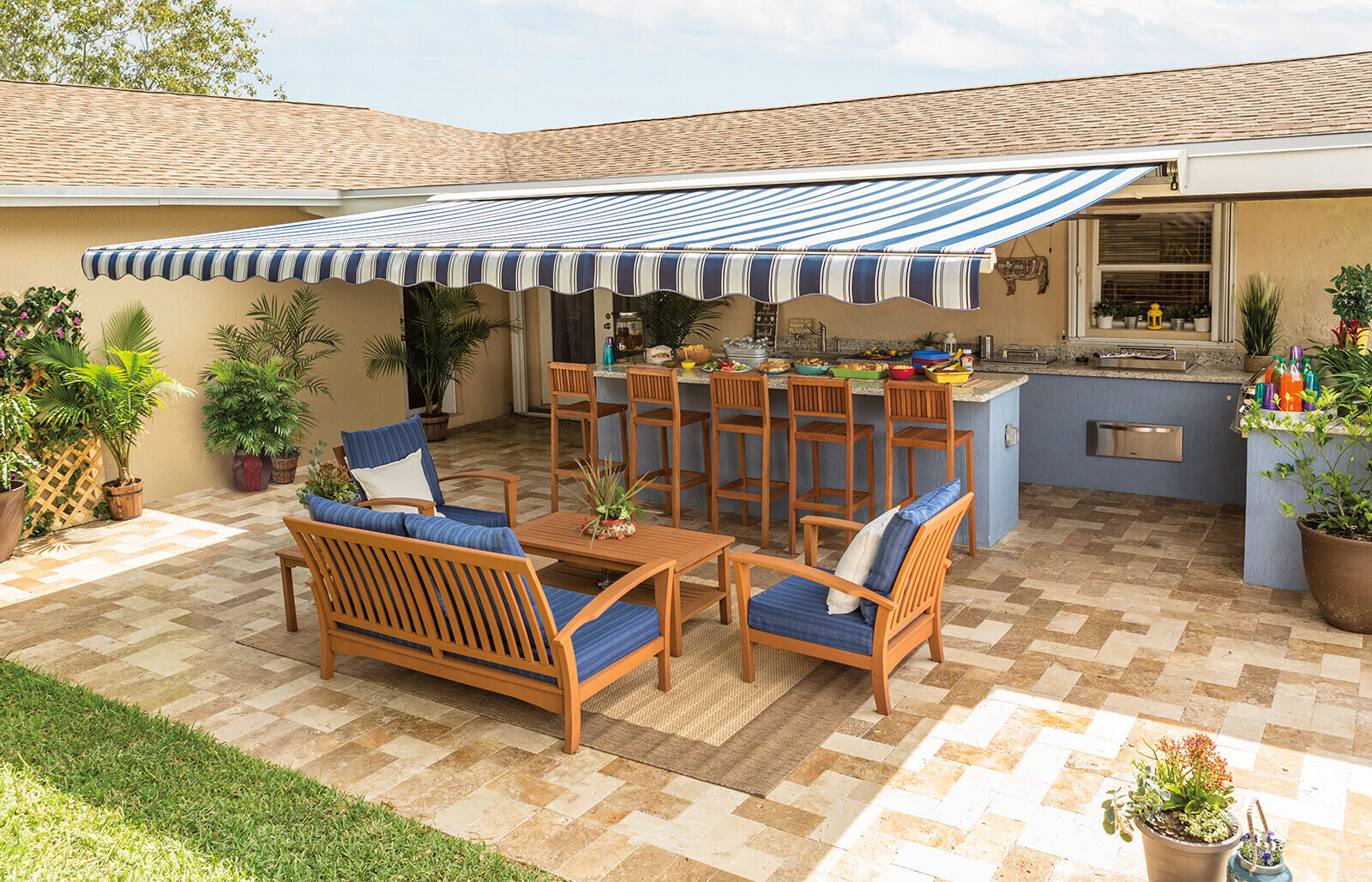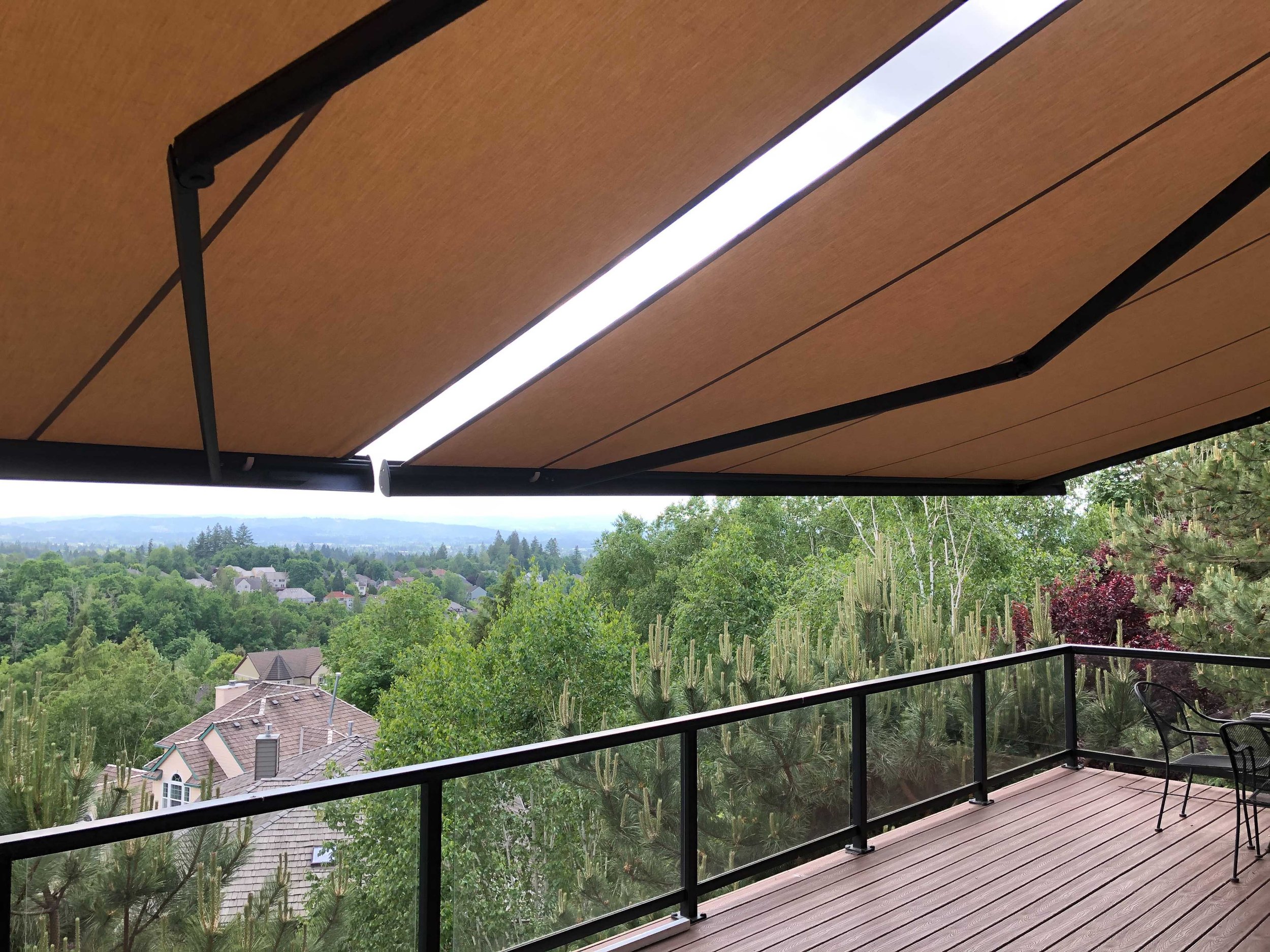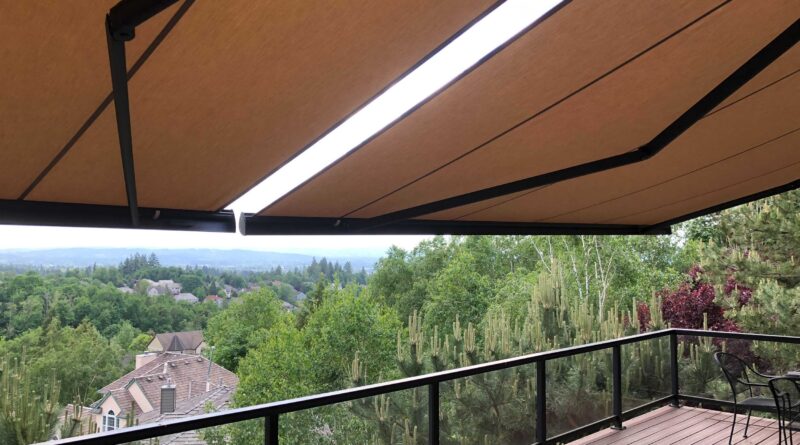Eye strain and glare are common problems that can have major impacts on productivity and comfort. Glare from bright sunlight or artificial lights can cause squinting, headaches, and fatigue. A practical solution to combat glare is installing awnings on windows, doors, storefronts, and other exterior areas. Awnings provide shade and reduce glare in an attractive and functional way. This article will discuss six key benefits of awnings for reducing eye strain and glare:
Block Harmful UV Rays
Exposure to ultraviolet (UV) rays from the sun can damage eyes and skin over time. Awnings made from UV-resistant fabric will block up to 98% of harmful UV rays. This protects eyes, skin, and indoor furnishings from fading. With less UV exposure, eyes will suffer less strain. The shade from awnings also reduces squinting caused by bright sunlight.
Awnings are an excellent protective barrier between eyes and the sun’s intense UV radiation. Just small amounts of UV exposure contribute to conditions like cataracts and macular degeneration over time. Awnings made of tightly woven, UV-blocking fabrics can dramatically reduce exposure. This prevents cumulative damage to the cornea and retina. Less UV reaching the eyes means less molecular degradation and less likelihood of developing vision problems later in life. When you’re looking to upgrade your awnings in Dallas to prevent potential eye damage, take this into account.
Reduce Heat and Glare

source: medium.com
Glare occurs when excessive bright light enters the eye. This causes squinting, discomfort, and impaired vision. Awnings prevent direct sunlight from entering windows and doors. With less intense light coming in, eyes can relax. Awnings also reduce solar heat gain indoors. Less heat means cooler indoor temperatures and less eyestrain from thermal discomfort. Exterior awnings are an energy-efficient way to reduce glare and heat without blocking views.
Installing awnings over windows prone to glare will immediately improve comfort. With shade covering the glass, sunlight won’t reflect off surfaces to create distracting brightness. Eyes will adjust quicker when moving from indoors to outdoors and back again. The cooler indoor temperatures from awnings also prevent dry, strained eyes. Since awnings don’t obstruct the view outdoors, they create pleasantly diffused natural light indoors. This soft, glare-free light is easier on the eyes than harsh direct sun.
Improve Visibility
Glare reduces visibility both indoors and out. Squinting makes it harder to see details. Awnings improve visibility by controlling light levels entering a space. With improved visibility, eyes strain less to focus. Tasks like reading, computer work, cooking, and hair styling become easier with reduced glare. Awnings on storefronts can also help draw attention to displays and signage. Improved visibility equates to better sales.
Glare from intense light makes even simple visual tasks more challenging. Adding awnings creates ideal lighting conditions to see clearly. Eyes won’t need to squint to pick out details, whether you’re working on crafts at home or creating a retail display. Awnings also reduce shadows and contrast between light and dark areas. With diffuse, even light coming in through the awning fabric, everything is more visible. Improved visibility helps prevent eye fatigue from overexertion.
Protect Interiors

source: pinterest.com
Unfiltered light damages interior furnishings and finishes. Constant exposure to UV light causes fading on upholstery, wood surfaces, art, and more. Window awnings protect these assets by blocking UV rays. This saves money on replacements and creates a more visually pleasing indoor environment. With less fading, eyes adjust better indoors without excessive glare or contrast. Protecting interiors from sunlight allows eyes to relax.
Window awnings not only benefit human comfort and vision – they also protect investments in furniture, art, fabrics and flooring. Constant UV exposure takes a major toll on finishes and textiles. Awnings act as shields to prevent sun damage to valuables inside. With less fading from awnings, interiors maintain their original colors and appearance longer. This consistency makes indoor spaces more soothing to inhabit. Eyes won’t have to strain from excessive glare, bleached spots or high contrast between faded and unfaded areas.
Save Energy
Awnings provide passive cooling by shading windows. With less direct sunlight hitting a building, indoor temperatures stay lower. This reduces reliance on air conditioning. Less energy consumption translates into lower utility bills and reduced environmental impact. Cool and comfortable interiors also prevent eyes from becoming hot, dry, and strained. Awnings are an eco-friendly solution for managing glare and cooling.
The cooling effect from awnings can make a big difference in overall comfort and energy savings. With windows shaded, indoor air stays cooler and circulation improves. Less heat penetrating through windows means air conditioners don’t have to work as hard. This saves electricity and money during hot weather. Well-cooled interiors are also easier on eyes. Lower temperatures and improved air flow prevent dryness and irritation. Cooler indoor environments are simply more pleasant for vision and prevent fatigue.
Select Custom Options

source: pinterest.com
There are many awning types, sizes, fabrics and colors to match any aesthetic. Stationary awnings over windows provide constant protection. Retractable awnings allow control over shade. Awning styles like domes and drop valances provide enhanced glare reduction. Sensors can automatically extend awnings when sunny. Logos and graphics can be added for branding. With custom options, awnings can reduce glare while complementing architecture. This creates comfortable, attractive spaces.
The choices are nearly endless when it comes to awning styles and fabrics. Homeowners can select metal, canvas, acrylic, mesh and more to match exterior colors. Custom printed graphics are possible for unique designs. For businesses, branded awnings boost visibility of storefronts. Multi-story buildings can outfit upper and lower awnings in different colors for dimension. Sensors that automatically adjust retractable awnings based on sunlight take the guesswork out of shade control. With so many possibilities, there are stylish awnings to reduce glare anywhere while adding aesthetic appeal.
Installing awnings is an affordable way to prevent eye strain, protect skin, and reduce reliance on air conditioning. Awnings provide effective shading and UV protection while enhancing aesthetics. Homes and businesses alike can benefit from reduced glare. With smart awning choices, it’s possible to stop squinting and let eyes relax. Consult local awning companies to select durable products that will reduce glare and complement building design. With cooler and shadier interiors, productivity and comfort will improve. Awnings are a simple solution with major benefits for eyes and overall wellbeing.




